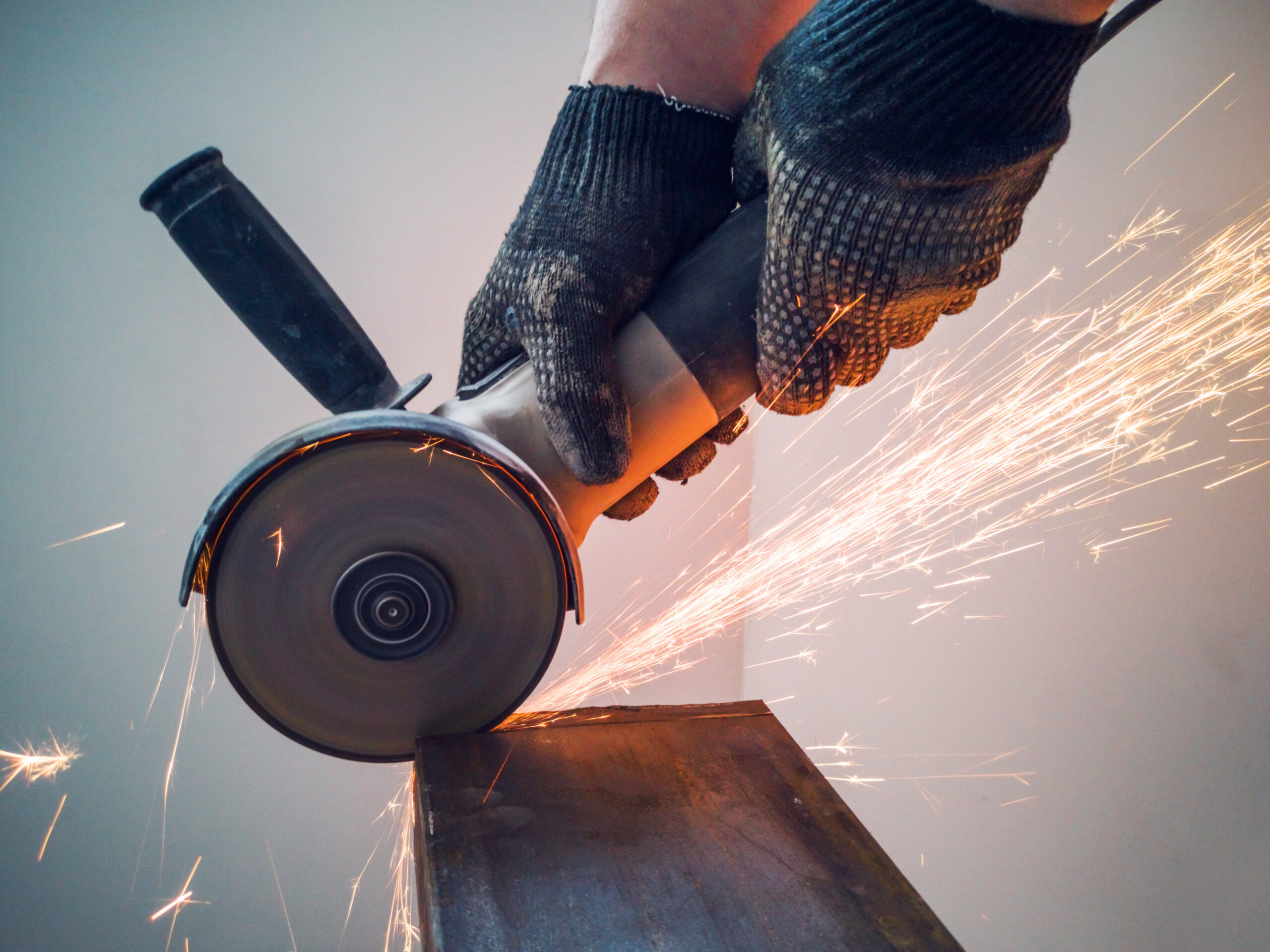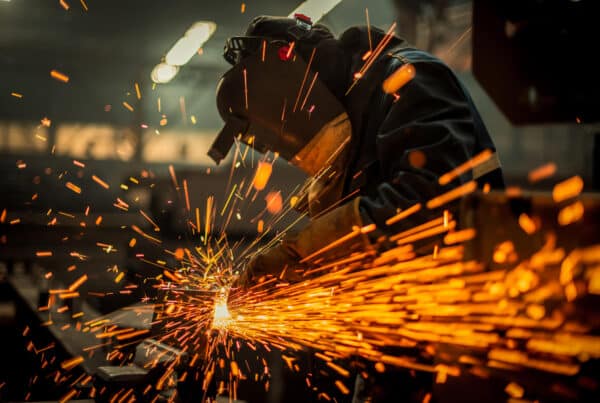Whether you’re a seasoned professional in the construction industry or a DIY enthusiast taking on your latest home project, understanding the ins and outs of diamond blades can be a game-changer.
When you’re working with hard materials like concrete, metal, or tile, a regular saw blade just isn’t gonna cut it. You need the precision, durability, and efficiency of a diamond blade.
In this comprehensive guide, we’re breaking down everything you need to know, including how and when to use diamond blades, what types of materials they can cut, how to pick the right blade size, and how long they last. Plus, we’ll go over the essential safety tips for diamond saw cutting and compare the top blades that our customers use.
What Are Diamond Blades Used For?
Diamond blades are basically the superheroes of cutting. A diamond blade features synthetic or natural diamond crystals attached to its edge. This unique design enables them to cut through an extensive range of materials with unrivaled efficiency and speed. There are no one-trick ponies here. They’re versatile champs that can handle a wide range of materials with ease.
If you’re in the construction game, diamond blades are your trusty sidekicks. They effortlessly slice through concrete, granite, cement, bricks, pavers, and stone, making those tough tasks seem like a walk in the park. Need precise cuts? Diamond blades save you time on the job, ensuring accuracy with a clean finish. No need for touch-ups or polishing after cutting. Plus, you can cut wet or dry. However, wet cuts help manage the dust and lengthen the life of the blade.
Specialized diamond blades are indispensable in metalworking jobs. They can cut iron and steel, debur a metal cut with ease. And they’re really useful for cleaning or grinding surfaces, like preparing metal before welding. If you’re working on a project with rebar, angle iron, cast iron, conduits, or steel bars or pipes, diamond saw cutting is the way to go.
Diamond blades are great when it comes to cutting tiles. Whether you’re installing a kitchen backsplash or laying a full bathroom, diamond blades ensure clean and precise cuts that make the finished product look amazing. You can cut wet or dry here too, but a wet cut will give the tile a better finish, and you’ll get more life out of your blade.
Do Diamond Blades Really Cut Metal?
Yes! With advancements in blade design and technology, certain diamond blades are capable of cutting through all kinds of metals. A lot of metals have abrasive properties that can prematurely wear down diamond crystals. So, hybrid blades have been created with a combination of diamonds and other abrasive materials to enhance their capacity to cut through metals like steel, iron, and more.
What Size Blade Is Best For Diamond Saw Cutting?
Choosing the right size blade is the key to optimal cutting results. It’s not about one size fits all – it’s about finding the perfect fit for your project. Your blade size impacts both cutting precision and overall efficiency, and there are a lot of different factors that play a role in figuring out what size you need.
Materials Matter
For thick materials like concrete, a larger blade diameter ensures deeper cuts without straining the blade. But when it comes to precision work, smaller blades are your go-to for detailed maneuvers.
What’s Your Saw Type?
Different saws have their preferences, just like we do. Circular saws, tile saws, and angle grinders all have sweet spots for blade sizes. Matching the recommended blade size to the saw type optimizes the saw’s performance and keeps everybody safe.
How Big is the Project?
Size matters, especially when it comes to project scale. Big projects love big blades because they get the job done faster. Smaller blades are your secret weapon for intricate work that requires more precision and control.
Consider Blade RPM
Matching your blade size with the saw’s RPM (Revolutions Per Minute) is essential to prevent damage and get a smooth cut. Blade manufacturers provide guidelines for the max RPM for each blade size. And sticking to those recommendations helps prevent overheating, blade wear, and potential accidents.
How Do Diamond Blades Cut?
When you get down to the nitty-gritty of how diamond blades work, they aren’t actually “cutting” anything. It’s really the one-two punch of fracture and abrasion. As the blade rotates, the exposed diamond crystals create micro-fractures in the material, weakening its structure. At the same time, the diamonds abrade the material’s surface and gradually wear it away.
Behind those diamonds, there is typically a bonding matrix that’s like the backbone of the blade. In Devour blades, we use a blend of nickel and diamond to adhere the mix to the steel core blade. This matrix determines the blade’s hardness, speed, and heat resistance. It’s the secret sauce that keeps the diamonds in check while they work their magic.
But cutting obviously generates heat, and heat can mess with the blade’s performance. That’s where water and lubrication come in. Water is used in tile and masonry cutting, while lubrication is used for metal. They keep the blade and material cool to give you a clean and precise cut. Some blades even have specialized segments that distribute the water more efficiently to enhance the cooling and lubrication.
There are two designs in the diamond blade world: continuous rim and segmented blades. Continuous rim blades are your go-to for delicate materials like tiles. Segmented blades, with gaps between the diamond segments, are perfect for tackling tough materials like concrete. It’s all about having the right blade, or wheel, or accessory for the job.
How Long Do Diamond Blades Last?
High-quality diamond blades can last you a while, especially when you take care of them. But there are a mix of factors that can determine their lifespan.
The hardness of the material being cut directly affects the lifespan of the blade. It’s all about finding that sweet spot between toughness and wear. Proper cutting technique is important too. Using the right speed and pressure can extend its life. Just like driving – you don’t want to go pedal to the metal all the time. And, of course, regular cleaning and inspecting for damage is a great way to ensure your blade stays in top shape.
Diamond Saw Cutting: Safety First
Safety is non-negotiable. Stick to a few best practices to minimize the risk of accidents and make sure your working environment is secure.
Personal Protective Equipment
PPE is your friend. Safety glasses, ear protection, gloves, and a dust mask shield you from potential hazards like flying debris, noise, and dust particles.
Blade Inspection
While bonded abrasives are prone to shattering at high RPMs, Devour’s electroplating technology prevents our blades from splintering, fracturing, or shattering. Still, it’s a good idea, before the blade starts spinning, to give it a once-over. Are there cracks or wear? Swap it out for a fresh one.
Blade Secure, Operator Secure
Proper blade installation is a must. While Devour blades can cut in either direction, there is a recommended direction when installing the blade. So, check that it’s not on “backward.” Make sure the blade is snug and secure on your saw. A loose blade is a huge safety hazard.
Secure Your Workplace
Make sure your workpiece is firmly in place to prevent any movement during cutting. Unsecured materials can lead to inaccurate cuts and potential accidents. And always ensure that your environment is clear of any unsuspecting cords, or tripping hazards.
Ventilation
Clean lungs, happy builder. Work in a well-ventilated area, and if possible, use tools equipped with dust collection systems to minimize dust exposure.
Operator Positioning
When cutting, stand to the side of the blade to avoid contact with any debris, kickbacks, or unexpected surprises. Pay close attention to the direction that the diamond blade is spinning. It can be hard to tell, especially at high speeds.
Listen to the Experts: Follow the Manual
Manufacturers know their stuff. Follow their diamond saw cutting guidelines for a smooth and safe experience.
There you have it – a crash course in all things diamond blades. These tools are the unsung heroes of the construction world, making tough tasks look like child’s play. From slicing through concrete to taming metals, diamond blades have your back. Just remember, choose the right size, respect the science of cutting, and above all, prioritize safety.
Need help finding the right diamond blade for your next project? Shop our entire line of products.
Devour’s Premium Diamond Blades
Check out our products below for optimal diamond saw cutting. Cut faster and cleaner and get up to 100x longer life with our exclusive plating technology.
Here’s How Our Blades Perform
- 2X FASTER CUTTING
- 10x faster than Bonded Abrasive in Concrete
- 2x faster than Metal Bond in Granite and Porcelain
- 3-5x MORE LIFE
- 100x longer life than Bonded Abrasive in Concrete
- 3x longer life than Metal Bond in Granite and Porcelain
- Much safer blades with NO SHATTERING OR SPLINTERING and NO KICK BACK due to our electroplate technology
- Depth of cut consistent with No Shrink
Why Such a High Performing Blade?
Devour uses an exclusive electroplating technology that allows us to maximize diamond exposure along the edge of the blade while securing an indestructible bond.



